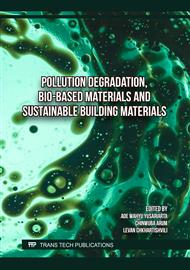p.25
p.31
p.41
p.47
p.59
p.69
p.85
p.97
p.107
Development of Ordinary Least Squares Regression Model for the Residual Flexural Strength of Corroded Reinforced Concrete Beam
Abstract:
This research investigates the impact of various environments and material conditions on the residual flexural strength of corroded reinforced concrete beams. Parameters such as corrosion rate (R), potential (Ecorr), corrosion current density (Icorr), polarization resistance (RP), curing age (t), and acid concentration (Ca) from 0.0 M to 0.3 M were used to evaluate the residual strength of the beams. The combination of Python software version 3.11 and IBM SPSS version 25 was used to develop, train, and analyze the necessary variables for the model. The regression model was developed using 64 data points and 15 predictors, resulting in 48 degrees of freedom for the residuals. The Akaike Information Criterion (AIC) and Bayesian Information Criterion (BIC) values are 897.9 and 932.5, respectively, functioning as metrics for assessing this model's quality of fit in comparison to others. A decreased AIC or BIC indicates a more optimal model fit. The Log-Likelihood value of -432.97 objectively evaluates this model's fit, with higher values indicating a better match. The regression results were further analyzed using polynomial terms to demonstrate the influence of the factors on the residual strength of corroded reinforced concrete beams. The findings indicate that the model sufficiently aligns with the data, as shown by a high R-squared value of 0.946, which indicates that 94.6% of the variability in residual strength is due to the independent variables. The adjusted R- squared score of 0.920 substantiates the model's robustness after accounting for the number of predictors. The investigation revealed that these factors significantly influence the residual strength of the reinforced concrete beams as established by the formulated model.
Info:
Periodical:
Pages:
69-81
Citation:
Online since:
October 2025
Price:
Сopyright:
© 2025 Trans Tech Publications Ltd. All Rights Reserved
Share:
Citation:


